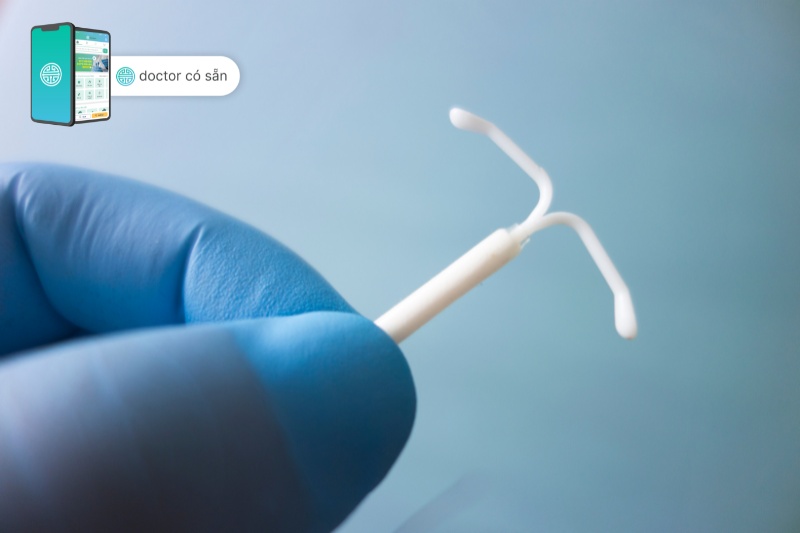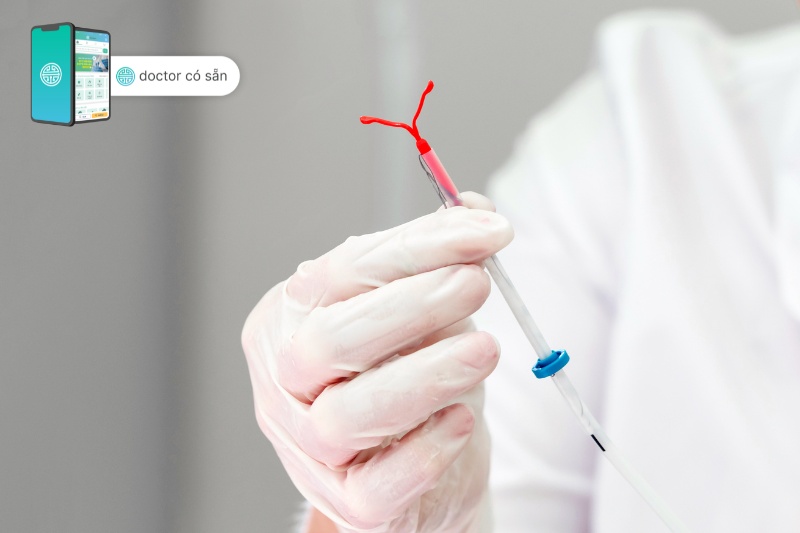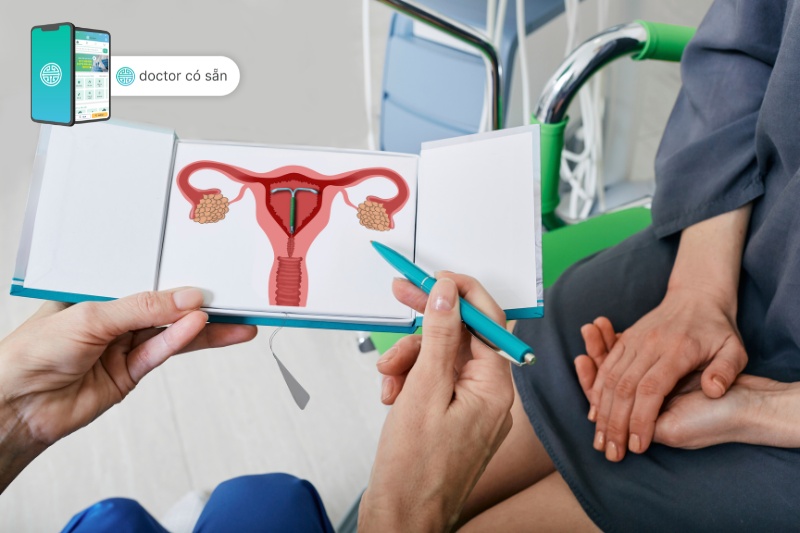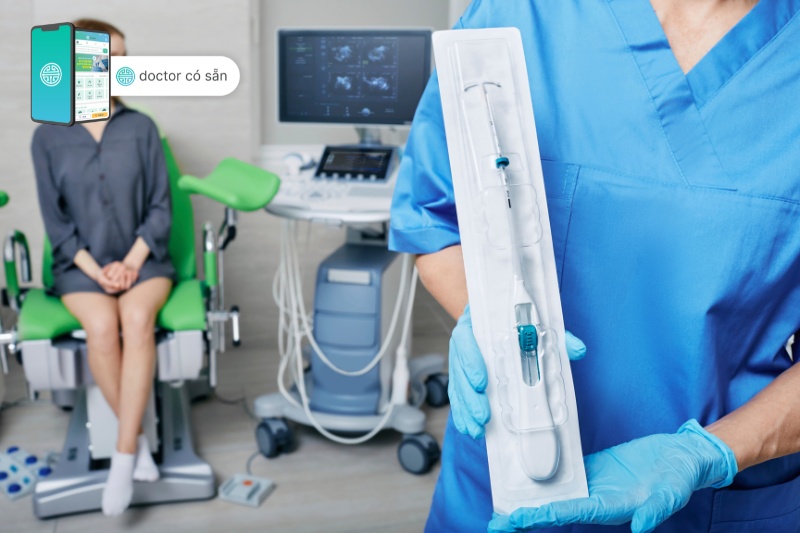Copper IUDs, also known as intrauterine devices, offer a highly effective and convenient method of contraception. They are a popular choice for many women due to their long-term effectiveness and hormone-free nature. In this article, we will explore the basics, benefits, potential side effects, insertion procedure, and what to expect after getting a copper IUD.

Understanding the basics of copper IUDs
What is a Copper IUD?
A copper IUD, also known as an intrauterine device, is a small, T-shaped device made of plastic and wrapped with a copper coil. It is inserted into the uterus by a healthcare provider and stays in place for several years, offering continuous contraception.
When it comes to birth control options, the copper IUD is a popular choice among women. It provides a highly effective and long-lasting method of preventing pregnancy. The T-shape of the device ensures that it stays securely in place within the uterus, providing reliable contraception.
One of the key advantages of the copper IUD is that it does not require daily maintenance or remembering to take a pill. Once it is inserted, it works continuously, providing peace of mind for those who want a reliable form of birth control without the hassle of daily reminders.

How Does a Copper IUD Work?
Unlike hormonal methods, copper IUDs work by releasing copper ions into the uterus. These copper ions create an environment that is toxic to sperm, preventing fertilization from occurring. Additionally, the copper IUD can affect the movement of sperm, further reducing the chances of pregnancy.
It’s important to note that the copper IUD does not contain any hormones. This makes it a suitable option for women who may have concerns about hormonal birth control methods. The absence of hormones also means that the copper IUD does not interfere with the body’s natural hormonal balance.
Once the copper IUD is inserted, it provides long-term contraception without the need for regular maintenance. This makes it a convenient option for women who want a reliable form of birth control without the need for daily attention.
Another advantage of the copper IUD is its effectiveness. With a failure rate of less than 1%, it is considered one of the most reliable forms of contraception available. This makes it an appealing choice for women who want to take control of their reproductive health and prevent unwanted pregnancies.
It’s worth noting that the copper IUD does not protect against sexually transmitted infections (STIs). Therefore, it is important to use additional barrier methods, such as condoms, to reduce the risk of contracting STIs.
In conclusion, the copper IUD is a highly effective and convenient form of contraception. Its unique mechanism of action, without the use of hormones, makes it a suitable option for many women. If you are considering the copper IUD, it is important to consult with a healthcare provider to determine if it is the right choice for you.
Find a clinic near you for a consultation:
The benefits of using copper IUDs
When it comes to contraception, there are numerous options available to women. One method that has gained popularity in recent years is the copper intrauterine device (IUD). This small, T-shaped device is inserted into the uterus by a healthcare professional and offers a range of benefits for those seeking long-term, hormone-free contraception.
Long-Term contraception
One of the significant advantages of copper IUDs is their long-term effectiveness. Once inserted, a copper IUD can provide contraception for up to 10 years, making it an excellent option for those who desire a reliable birth control method without the need for frequent replacements. This means that women can enjoy peace of mind knowing that they are protected against unintended pregnancies for an extended period.
Furthermore, the longevity of copper IUDs makes them a cost-effective choice in the long run. While the initial cost of insertion may be higher compared to other contraceptive methods, the fact that it can last for a decade means that women can save money on continuous contraceptive supplies or visits to healthcare providers for prescription refills.
Hormone-free option
Copper IUDs are an attractive choice for women who prefer hormone-free contraception. Unlike hormonal options, such as birth control pills or implants, copper IUDs do not introduce any synthetic hormones into the body. This makes it a suitable option for women who may have sensitivities or prefer to avoid hormonal methods.
By not relying on hormones, copper IUDs offer a natural approach to birth control. This can be particularly appealing to women who want to maintain their body’s hormonal balance or have experienced side effects from hormonal contraceptives in the past. Additionally, since copper IUDs do not affect hormone levels, they do not interfere with breastfeeding, making them a safe option for new mothers.
Another advantage of hormone-free contraception is the absence of potential side effects associated with hormonal methods. Many women experience changes in their menstrual cycle, mood swings, weight gain, or decreased libido when using hormonal birth control. With copper IUDs, these side effects are not a concern, allowing women to feel more in tune with their bodies and natural hormonal fluctuations.
In conclusion, copper IUDs offer a range of benefits for women seeking long-term, hormone-free contraception. With their extended effectiveness and hormone-free nature, they provide a reliable and natural option for those who desire a hassle-free birth control method. It is important to consult with a healthcare professional to determine if a copper IUD is the right choice for you, as individual circumstances and medical history may vary.
Find the best Ob-gyn clinics for a consultation:

Potential side effects and risks of copper IUDs
When it comes to contraception, there are various options available for women to choose from. One popular choice is the copper intrauterine device (IUD). While most women tolerate copper IUDs well, it’s important to be aware of the potential side effects and risks associated with this form of birth control.
Common side effects
Like any medical intervention, copper IUDs can have certain side effects. One common side effect is increased menstrual bleeding. Some women may experience heavier periods or more intense cramping, especially during the first few months after insertion. However, it’s important to note that these side effects generally subside over time as the body adjusts to the presence of the IUD.
It’s worth mentioning that not all women experience these side effects. Each individual’s response to the copper IUD can vary, and some women may have no change in their menstrual cycle or experience minimal discomfort.
Serious complications
While rare, it’s crucial to be aware of the serious complications that can be associated with copper IUDs. One potential risk is infection. Although the risk is low, it’s important to follow proper hygiene practices and maintain regular check-ups with your Ob-gyn healthcare provider to minimize the chances of developing an infection.
Another rare but serious complication is the perforation of the uterus during insertion. This occurs when the IUD punctures the uterine wall. While healthcare providers take precautions to minimize this risk, it’s essential to discuss this potential complication with your healthcare provider before deciding if a copper IUD is the right choice for you.
In some rare cases, the copper IUD can become embedded in the uterine wall. This happens when the device becomes lodged in the tissue of the uterus. If this occurs, it may require a medical procedure to remove the IUD safely.
It’s important to remember that the overall risk of experiencing serious complications with a copper IUD is low. However, it’s crucial to have open and honest conversations with your healthcare provider to fully understand the potential risks and benefits of this form of contraception.
Find the best Ob-gyn clinics for a consultation:
The procedure of inserting a copper IUD
Pre-Insertion Consultation
Before getting a copper IUD, you will have a consultation with your healthcare provider to review your medical history, discuss the procedure, and answer any questions you may have. It is essential to disclose any allergies, current medications, or previous difficulties with gynecological exams.
The Insertion Process
During the insertion process, your healthcare provider will first perform a pelvic exam to ascertain the position and size of your uterus. They will then insert the IUD through the cervix into the uterus. Some women may experience mild discomfort or cramping during the procedure. It is advisable to take pain medication before your appointment to help manage any discomfort.
Find the best Ob-gyn clinics for a consultation

Life after copper IUD insertion
What to expect immediately after insertion
After the insertion, it is common to experience mild cramping or spotting. Your healthcare provider may provide you with guidelines on managing these symptoms. It is also important to use a backup method of contraception for the first few days until the copper IUD becomes fully effective.
Long-term care and maintenance
To ensure the effectiveness of your copper IUD, it is crucial to schedule regular follow-up visits with your healthcare provider. They will check the position of the IUD, assess any concerns, and recommend appropriate maintenance. It is essential to be proactive in monitoring the strings of the IUD and report any significant changes or concerns to your healthcare provider promptly.
FAQ
How long does a Copper IUD provide contraception?
Copper IUDs are effective for between 5 to 10 years, depending on the specific brand and type used.
Is a prescription required to get a Copper IUD?
Yes, a healthcare provider needs to insert a Copper IUD, so a prescription or medical consultation is required.
Is a Copper IUD effective at preventing pregnancy?
Yes, Copper IUDs are one of the most effective forms of contraception, with a success rate of over 99%.
Can a Copper IUD be used as emergency contraception?
Yes, a Copper IUD can be used as emergency contraception when inserted within a certain time frame after unprotected intercourse.
Can a Copper IUD be used while breastfeeding?
Yes, a Copper IUD is safe to use while breastfeeding and won’t affect milk supply.
Can a Copper IUD be removed if desired?
Yes, a healthcare provider can easily remove a Copper IUD at any time. Fertility typically returns quickly after removal.
Are there any health risks associated with using a Copper IUD?
While serious complications are rare, there is a small risk of infection and perforation during insertion. Consult with a healthcare provider to discuss individual risks and benefits.
Does a Copper IUD protect against sexually transmitted infections (STIs)?
No, a Copper IUD provides no protection against STIs. It only prevents pregnancy.
Can anyone use a Copper IUD?
Most individuals can use a Copper IUD, but it may not be suitable for those with certain medical conditions or allergies to copper. Consult with a healthcare provider to determine eligibility.
Is there a hormonal version of the IUD with copper?
No, the Copper IUD does not contain hormones. There are other IUDs, like the hormonal IUD, which release hormones for contraception.
Can a Copper IUD be used as a long-term birth control solution?
Yes, many people choose the Copper IUD as a reliable, long-term contraception option.
Copper IUDs offer a reliable and convenient form of contraception for women. Understanding the basics, benefits, potential side effects, insertion procedure, and post-insertion care is vital in making an informed decision about this contraceptive method.
Discussing your options with a medical professional is recommended to determine if a copper IUD is the right choice for you. Remember, each individual’s situation is unique, and what works for one person may not necessarily work for another.












